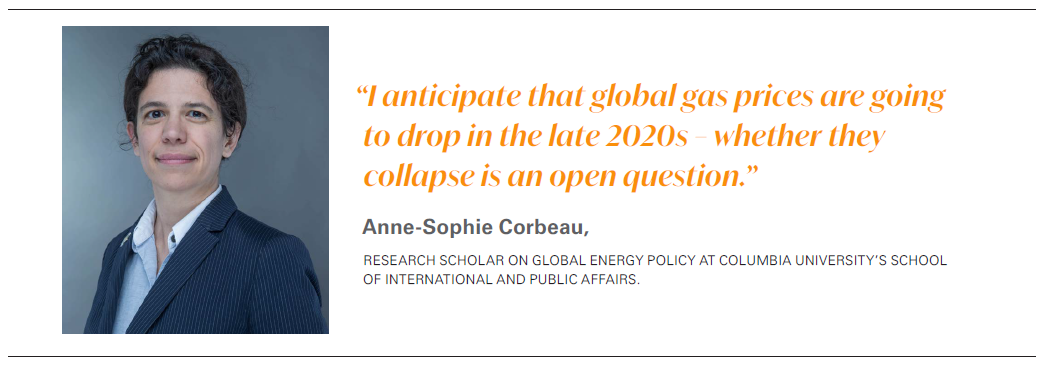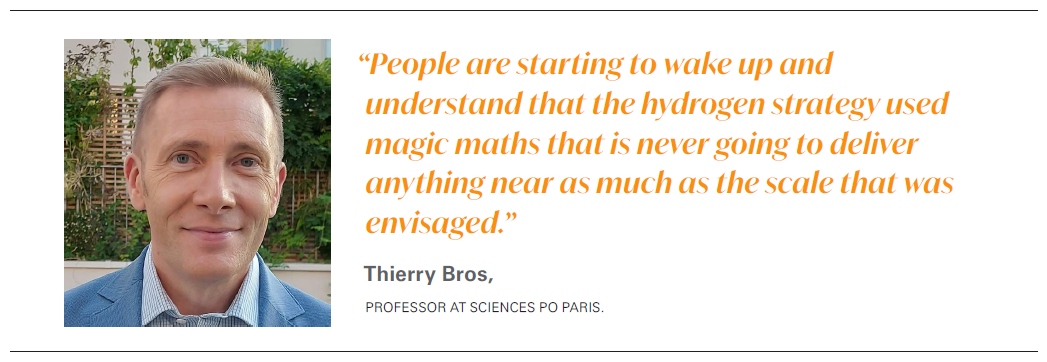Europe without buffers [Gas in Transition]
The recent strike action at Australian liquefaction terminals this month that triggered a spike in LNG prices highlights how much volatility in the global gas market persists, Thierry Bros, professor at Sciences Po Paris, explained in NGW’s In a Nutshell podcast this month. The market is simply too tight, leaving it greatly exposed to such supply shocks.
As far as Europe is concerned, prior to the conflict in Ukraine, most disruptions to global LNG supply were compensated for with extra Russian pipeline gas. Russia’s Gazprom, once responsible for 40% of European gas imports, would respond by stepping up supplies to its long-term contractual clients, or shifting more gas onto the spot market. This spare capacity provided Europe with a “buffer” against such supply shocks, Bros explained. This is, of course, no longer the case.
In part due to Russia’s actions, the global gas market will not loosen up until around the middle of the decade, when the next wave of global LNG supply is set to arrive, mostly from Qatar and the US.
“Unfortunately we are going to live with this volatility for a few more years. This kind of volatility means that any kind of news flow, even if it doesn’t matter at the end of the day, will have an impact on prices, because traders will have to review their spreadsheets and work out how this might affect the global supply-demand balance,” Bros says.
With the EU pushing to eliminate remaining Russian gas imports completely by 2027, the flexibility of supply is not going to improve anytime soon.
In the past, Europe had another buffer against global gas supply shocks in the form of coal-fired power, Anne-Sophie Corbeau, research scholar on global energy policy at Columbia University’s School of International and Public Affairs, noted in the podcast. When gas supply became scarcer, this would improve the economics for coal-fired power plants, which would respond by ramping up their output. Despite a recent increase in coal-fired power as a result of the energy crisis, the fuel’s use is in terminal decline, as CO2 tax continues to grow and governments work towards their emissions goals.
A third buffer which is now mostly obsolete was the giant Groningen gas field in the Netherlands, Bros notes. The earthquake-causing field, that at its height, delivered 87.7bn m3 of gas in 1976, has had its output capped at 2.8bn m3 for the year ending October 1, 2023 – the date when it will cease production entirely, while remaining on standby for a further 12 months in case of grave energy security risks.
The Dutch government has dismissed changing course on Groningen’s closure. Even if the field was to return to its 2022-2023 output, this is just a drop in the ocean in terms of overall European supply.
A fourth buffer, which fortunately is still intact, is gas storage. Owing to a concerted effort by Brussels over the past year, EU gas storage facilities have now been filled to close to full capacity, and additional volumes are being stored in west Ukraine.
Much depends on China
The European market will grow ever more volatile in terms of gas demand in the power sector with the rise of intermittent renewables, Corbeau warned.
“This is leading people to say that Europe is no longer going to be the global balancing market – it’s going to be China,” she said, but the Chinese market is not the same as the European one.
 China does not have the same amount of gas storage capacity in comparison to demand as Europe, as a result of years of import demand growth far-outpacing government efforts to build up that gas storage capacity. Furthermore, the interaction between gas and coal demand is not dictated by spot prices, Corbeau says, unlike in Europe. The interaction between pipeline gas supply and LNG is also different, and there remains a lot of oil indexation in pricing in China.
China does not have the same amount of gas storage capacity in comparison to demand as Europe, as a result of years of import demand growth far-outpacing government efforts to build up that gas storage capacity. Furthermore, the interaction between gas and coal demand is not dictated by spot prices, Corbeau says, unlike in Europe. The interaction between pipeline gas supply and LNG is also different, and there remains a lot of oil indexation in pricing in China.
Unlike Europe, China has been over-contracting for long-term gas supply, Bros and Corbeau explains. This helped Europe last year as China, lacking the means to store excess imports amid low domestic demand, delivered those extra volumes to Europe. But that will not be a saving grace for Europe when China experiences spikes in its own consumption.
A lot therefore hinges on Chinese gas demand going forward and this is anyone’s guess. China is a very big market – now bigger than the European market – making it hard to forecast. Its gas use depends on three pillars – domestic supply, which has been growing quickly in recent years; pipeline supply namely from Central Asia and Russia; and LNG.
Regarding the LNG import output, there is much uncertainty, Corbeau explained. Imports in the first eight months of this year were up 11%, after declining by over 20% in 2022.
“We don’t know what the end of the year will look like – in China there is now a sizable portion of residential commercial demand, which is mainly dictated by the weather,” she said.
The winter outlook
Europe is in a better position ahead of this winter than the last, but risks remain and policymakers should avoid the complacency that Bros currently sees. Storage volumes alone are not a safeguard of energy security. Europe needs to keep working to attract more LNG and more pipeline supply from Azerbaijan, Norway and countries in North Africa.
Corbeau noted that there have been multiple disruptions to global LNG supply over the past few years, from the late-2020 fire at the Hammerfest LNG plant in Norway to the strike action in Australia this month. Europe should head these risks going forward.
Various European policymakers have been pushing for limitations on Russian LNG imports. While both experts argue such moves could aggravate the European energy crisis in winter, Corbeau noted that the Russian government may have motivation to act first. Unlike Russian pipeline gas exports, the country’s LNG exports are subject to a much smaller tax burden and so the government has less reason to maintain them, in terms of the revenues it receives, if there are political reasons for cutting off supply to Europe.
Russia could divert its LNG supply to gas-starved markets in Asia such as Pakistan, as part of its push to develop new ties with non-Western aligned countries post-Ukraine invasion, Corbeau suggested.
The next wave of fresh LNG supply will be far larger than the last one, Corbeau said. And even though European leaders have reached out to Africa for new sources of gas supply, the majority of final investment decisions on new projects over the past two years have been in the US.
“The question is when exactly is LNG going to start arriving. We know which plants are under construction, but there is always a little bit of uncertainty about when they start up,” she explained. “Very few plants start on time.”
Those projects due online closer to the end of the decade may struggle, as prices subside.
“I do anticipate that global gas prices are going to drop in the late 2020s – whether they collapse is an open question,” she said.
The policy outlook
Bros welcomes the departure of Frans Timmermans from the European Commission in August. Timmermans, who is going on to run as the Netherland’s next prime minister, presided over the European Green Deal. Bros considers his approach to the energy transition as “dogmatic,” noting the commission’s unrealistic forecasts for future gas demand.
If Europe is serious about phasing out coal, it should recognise that electricity needs will continue to grow, and that gas will be needed as a cleaner base-load source of energy supply, Bros said. He sees a positive shift towards more pragmatic energy planning, drawing attention in particular to the EU’s hydrogen strategy.
“People are starting to wake up and understand that the hydrogen strategy used magic maths that is never going to deliver anything near as much as the scale that was envisaged.”
The 2020 hydrogen strategy targeted 10mn tonnes of green hydrogen production by 2030, accompanied by an equal amount of green hydrogen imports. But the EU may only be able to produce and import a combined 2mn t of the low-carbon fuel by that year, according to Bros, noting both the insufficient project pipeline in Europe and a lack of enough global supply.
Greece and the UK have been the frontrunners in adopting more pragmatic energy policies in the wake of the energy crisis, he said, adding that the appointment of a new European Commission next year offers hope of a further shift towards more realistic planning.



